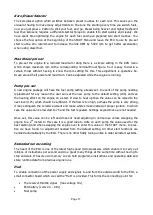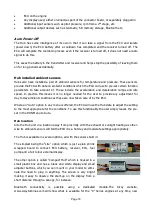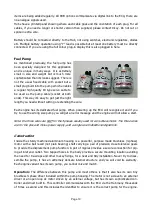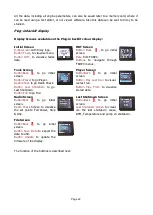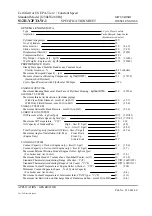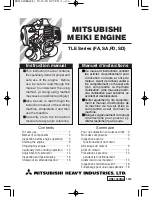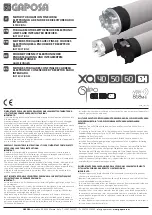
Page 13
Engine Description
The X series engines are miniature turbojets designed and produced specifically to produce thrust
to power small model aircraft. Each has a single stage billet machined centrifugal compressor and
single stage cast Inconel axial flow turbine mounted on a single shaft. The engine is fitted with a
long life replaceable ceramic glowplug which enables the engine to initiate combustion directly on
liquid fuel after which further fuel is gradually introduced into the main part of the combustion
chamber to provide combustion heat to operate the engine. A high speed brushless electric starter
motor fitted with a clutch mechanism to the front provides drive to the rotor up to and beyond
self-sustaining speed for starting the engine. The starting sequence is controlled by an electronic
system fitted to the engine (ECU) which initiates the start sequence and controls the parameters
of the engine within design limits.
The engine rotor shaft is supported by two ceramic bearings which are lubricated by a small per-
centage bleed off the pressurized main fuel supply, which should contain a small percentage of oil
for this purpose. The rotor discs are separately balanced and then 2-stage dynamically balanced
on assembly to the engine. Disturbing the rotor will lose this delicate balance and the engine will
need to be returned to a service unit for rebalancing.
The fuel for the engine is provided from a fuel tank and fed through a small pump driven by a 3-
phase (brushless) motor that has its own intelligent control. Each engine has its own dedicated
pump type and may not be mixed.
The engine speed between idle and maximum is controlled by varying the speed of the fuel pump
rotor by command from the electronic device called an ECU (Electronic Control Unit) that is
mounted under the front cover of the engine. This sends commands to the fuel pump via a con-
nector board (Hub) to turn at a certain rpm (and therefore flow rate) to deliver a precise amount
of fuel and the fuel pump automatically adjusts itself to this rate. If the incorrect pump is fitted the
ECU will identify this and will not proceed, but display an error message.
The communication between the ECU and fuel pump and all other function accessories, display,
telemetry etc is via a single wire bidirectional digital data link, no analogue voltages are used and
operation is not voltage sensitive.
To control the admission of fuel to the burner and main combustion chamber there are two minia-
ture electric valves attached to a mounting block fitted to the front of the engine, under the cover.
This block also holds a 4mm quick-release fuel feed connection. The valves are connected to and
controlled by the ECU as required by the starting sequence. The valve block assembly is replacea-
ble but the individual valve assemblies are not user serviceable.
The battery power for the engine can be within the range 7.4v to 9.9v, so 2S LiPo is best and and
3S LiFe is suitable. The larger engines need a higher current capability.

















